|
Historic Memphis
FILM ROW |
|
...a bit of Hollywood on the Mississippi |
|
|
|
 |
Location! Location! Location! Located
at the center of the Mid-South with access to major roads, bridges,
and railroads, Memphis was very attractive to Hollywood
when the Motion Picture studios began planning a distribution
system to move their films out quickly to Arkansas, West Tennessee,
Mississippi, and Missouri. Movie theaters changed their
programs several times a week and the films had to be ready to ship
at all hours of the night. An area of one-story brick
buildings in Memphis was established around Vance and 2nd Street,
which became known as "Film Row". Film Row rose to
prominence in 1925 when the major studios began opening their
individual distribution buildings. And at its peak, over 650
theaters in the mid-south were served out of Memphis. |
|
| |
|
|
|
|
 |
 |
 |
 |
|
Metro-Goldwyn-Mayer |
Warner Brothers |
Columbia |
20th Century Fox |
| |
|
|
|
|
|
|
|
|
|
|
|
|
|
|
|
|
|
Hollywood had planned an elaborate system of distribution,
which was designed to give them the biggest profits and the
largest share of the box office, by cutting down on the
necessity for long shipments. Trucks would move in and
out of Film Row at all hours - moving the latest films to
all parts of the mid-south. By 1937 there were nine
film exchanges in the Film Row area - Metro Goldwyn Mayer, Warner
Brothers, 20th Century Fox, Columbia, RKO, Republic,
Paramount, Monogram and Universal. |
| |
|
|
|
| |
|
|
|
|
|
|
|
|
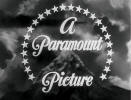 |
 |
 |
 |
|
Paramount
|
R K O |
Universal |
Republic |
|
|
|
|
|
|
Other studios followed. Each of these exchanges employed
around 30 people and had fireproof vaults to protect the building from the extremely flammable
film. The most powerful Hollywood studios at this time, not only made films,
they distributed them, and owned the movie theaters where they
were shown. The film industry
reached it's peak in 1946 as 90 million people per week
filled the movie theaters. The war years were
extremely successful for Hollywood. But in the
years after World War II, people began moving to the
suburbs and taking their theaters with them.
And then television kept them at home.
Downtown theaters started closing. |
 |
| |
United Artists |
|
| |
|
|
|
|
To
compound the closing of theaters, Hollywood experienced yet
another setback: The Supreme Court ordered the studios
to divest themselves of their theaters. By 1958 Memphis
Film Row was becoming a ghost area. In 1955 there had
been 25 distributors, but only six years later there were just
16. Today there still exists some bits of evidence in
the area to remind one of its association with Hollywood -
several logos remain on the sides of the buildings. But
as in all areas of downtown Memphis, some buildings have been
demolished. A few of the studio buildings are now
occupied with new businesses and others are vacant.. |
 |
| |
Universal-International |
|
| |
| |
|
 |
 |
 |
 |
|
Map showing Film Row |
1st National Pictures |
Warners |
Metro Goldwyn Mayer |
| |
|
|
|
| |
|
|
|
 |
 |
 |
 |
|
Columbia |
M-G-M |
20th Century Fox |
Warners |
| |
| |
 |
 |
 |
 |
|
Film
Row |
RKO |
Universal-International |
Film
Row |
|
| |
| |
|
|
|
|
|
|
|
|
| |
| |
|
Film Transit, Inc.
was
founded in 1936 by M. H. Brandon at 311 S. Second - right in
the middle of Film Row. Their mission was to transport
all these films from theater to theater in small towns throughout the mid-south. They're still
in business and have now
moved to their current home at 3931 Homewood Road, Memphis, where they
are a carrier of small package freight. |
 |
| |
The
Film Row location of Film Transit
|
|
|
|
|
|
|
|
|
|
|
|
 |
National Screen
Service
was
a company which controlled the distribution of theatrical
advertising materials from 1940 through the 1980s.
They produced posters, and most accessories for virtually
every movie released in the U.S. Some of the most
stunning poster art of the 20th Century originated during this
period. National was called upon to provide advertising art for
the theaters at any given time. Even if a movie were
re-released after 10 years, they had to have the
advertising material ready for distribution. Thus,
they opened an Exchange office in the middle of Memphis
Film Row at 500 S. Second. |
| |
|
|
|
The
company was actually formed earlier in 1920 to produce
and distribute movie trailers on behalf of the movie
studios. Over time they gradually took over
production and distribution of other forms of movie
advertising, including movie posters. During the 1980s, movie theaters changed
from small individual screens to large multiplexes and the
amount of advertising space for a given movie was limited.
As a result, the large movie posters dropped down from 4-sheet
size to
just the one-sheet size. Eventually, the major studios took
back control of their own advertising, and this greatly
reduced National's presence. They were bought
out by Technicolor in 2000. |
 |
| |
NSS location on Second Street |
|
|

$690,000
Metropolis
|
When National Screen Service ceased most of its movie
poster printing and distribution in 1985, some of the
posters that had been stored in exchanges around the
country, ended up in the hands of private collectors.
Now there is a thriving, and very lucrative collectibles
market in movie posters. They have even crossed
over into the realm of "Fine Art". Some of these
posters have become quite valuable, with a few rare
examples bringing $500,000 or more at auction. The
current record price for a movie advertising poster was
set in 2005 for the 1927 film "Metropolis". There
are only 4 known copies of this poster and it sold for
$690,000.
As a result of the demand, some of the more popular
movie posters are being reproduced by forgers.
Reproductions can be distinguished by size, printing
quality, and paper type. In addition, the
originals had a National Screen Service code on them.
Below are some of the most sought after movie posters by
collectors. The horror movie posters and science
fiction posters are in the range of $100,000, and
up. |
|
|
|
 |
 |
 |
 |
 |
 |
 |
|
The
most valuable poster on the row above? The 1931
Frankenstein Poster sold for $198,000 |
|
|
|
 |
In
addition to posters, National Screen Service produced "Lobby
Cards". They were
smaller, usually 11 x14 or 8 x 10, and were issued in
sets of six or eight. Lobby cards were introduced
in the 1910's and were meant to complement the posters
for display in the lobbies or the foyers. They are
also very collectible. The current record price
for a lobby card is $44,812 for the 1935 "Dracula".
The sets of cards are generally broken up and sold
individually - but then collectors try to collect a full
set. Ironically, the cards produced in Mexico
to publicize American movies are more valuable than
those produced in the U.S. Below are some of the
more sought after Lobby Cards - sets of 8 and 6 - and 2
examples of Mexican Lobby Cards. |
|
| |
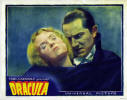 |
 |
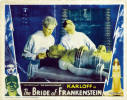 |
 |
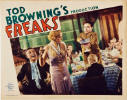 |
|
Dracula $44,812 |
Metropolis |
Bride of Frankenstein |
Casablanca |
Freaks |
|
| |
 |
 |
 |
 |
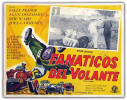 |
 |
|
Valentino |
Set of 8 |
Set of 8 |
Set of 6 |
Mexican Card |
Mexican Card |
|
|
| |
| |
 |
< National Screen Service
Magazine "EN ESS ESS" Volume I, No 6, 1946
Beth Imes
of Columbus, Mississippi, found this 1946 magazine among
her parents papers. Thanks to Beth for
allowing us to scan and post the entire magazine on this
page
"In memory of Marguerite Ryan Hickel and A. D. Hickel,
Jr., who both worked at National Screen Service in Memphis
in the late 1930's-early 1940s, fell in love and married
shortly after the end of WWII". |
|
| |
| |
|
|
| |
| |
|
Theater Poster
Exchange,
located on Calhoun in Memphis, was
begun by Henry Werling in the late 1940s. They used to
service a lot of little towns in the Mid-South. Because
the theaters in these towns changed movies every 3 days, they
would rent a poster for a very nominal fee and then send the
poster around the territory to the other small theaters.
When it was done, most of the paper advertising would be
returned to the poster exchange. Because all
the advertising was mass produced and relatively inexpensive,
no one seemed to care if they didn't get it all back or if
some of it went to the wrong exchange. The Theater
Poster Exchange is still in business, now called "Luton's
Theater Poster Exchange" at 3800 Contractors Pl, Memphis. |
| |
|
|
| |
|
Logos of other
studios whose films were distributed through Memphis Film
Row |
| |
|
|
| |
|
|
|
|
|
|
|
|
| |
|
|
| |
|
|
| |
|
|
|
|
|
|
Vintage Memorabilia of Memphis
Film Row ... |
|
|
|
|
|
|
|
|
|
|
 |
 |
 |
 |
 |
|
Columbia Invoice - 1939 |
1940 Directory |
1948 Directory |
Leo-Volney-MGM |
Monogram Logo |
|
| |
|
|
|
| |
|
|
|
| |
|
|
|
| |
|
|
|
|
|
|
|
|
|
|
|
Credits |
|
|
|
The
Historic-Memphis website does not intentionally post copyrighted
photos and material without permission or credit.
On
occasion a "non-credited" photo might possibly be posted because we
were unable to find a name to give credit. Because of the nature of
our non-commercial, non-profit, educational website, we strongly
believe that these photos would be considered "Fair Use. We have
certainly made no monetary gain, although those using this website
for historic or Genealogy research have certainly profited. If by
chance,
we have posted your copyrighted photo, please contact us, and we'll
remove it immediately, or we'll add your credit if that's your
choice. In the past, we have found that many photographers
volunteer to have their works included on these pages and we'll
also do that if you contact us with a photo that fits a particular
page. |
|
|
|
The "Historic-Memphis" website would like to acknowledge and thank the
following for their contributions which helped make this website
possible:
Google
Earth, Memphis
Public Library, Memphis University Library, Memphis Law Library,
Memphis Commercial Appeal, Memphis Press Scimitar, Shelby County
Register of Deeds, Memphis City Schools, Memphis Business Men's
Club, Memphis Chamber of Commerce, Memphis City Park Commission,
Memphis Film Commission, Carnival Memphis, Memphis Historical
Railroad Page, Memphis Heritage Inc, Beale Street Historic District,
Cobblestone Historic District, Memphis Historic Districts, Vance
Lauderdale Family Archives, Tennessee State Archives, Library of
Congress, Kemmons Wilson Family, Richard S. Brashier, Lee Askew,
George Whitworth, Woody Savage and many individuals whose assistance is
acknowledged on the pages of their contributions. Special
thanks to Memphis Realtor, Joe Spake, for giving us carte blanche
access to his outstanding collection of contemporary Memphis photos.
We do not have high definition copies of the photos on these
pages. If anyone wishes to secure high definition photos,
you'll have to contact the photographer or the collector.
(To avoid any possibility of contributing to SPAM, we do not
maintain a file of email addresses for anyone who contacts us). |
|
|
|
|
|
|
|
|
|
|
|
|
|
|
|
|
|
 |
|
Republic
Building |
|
|
|